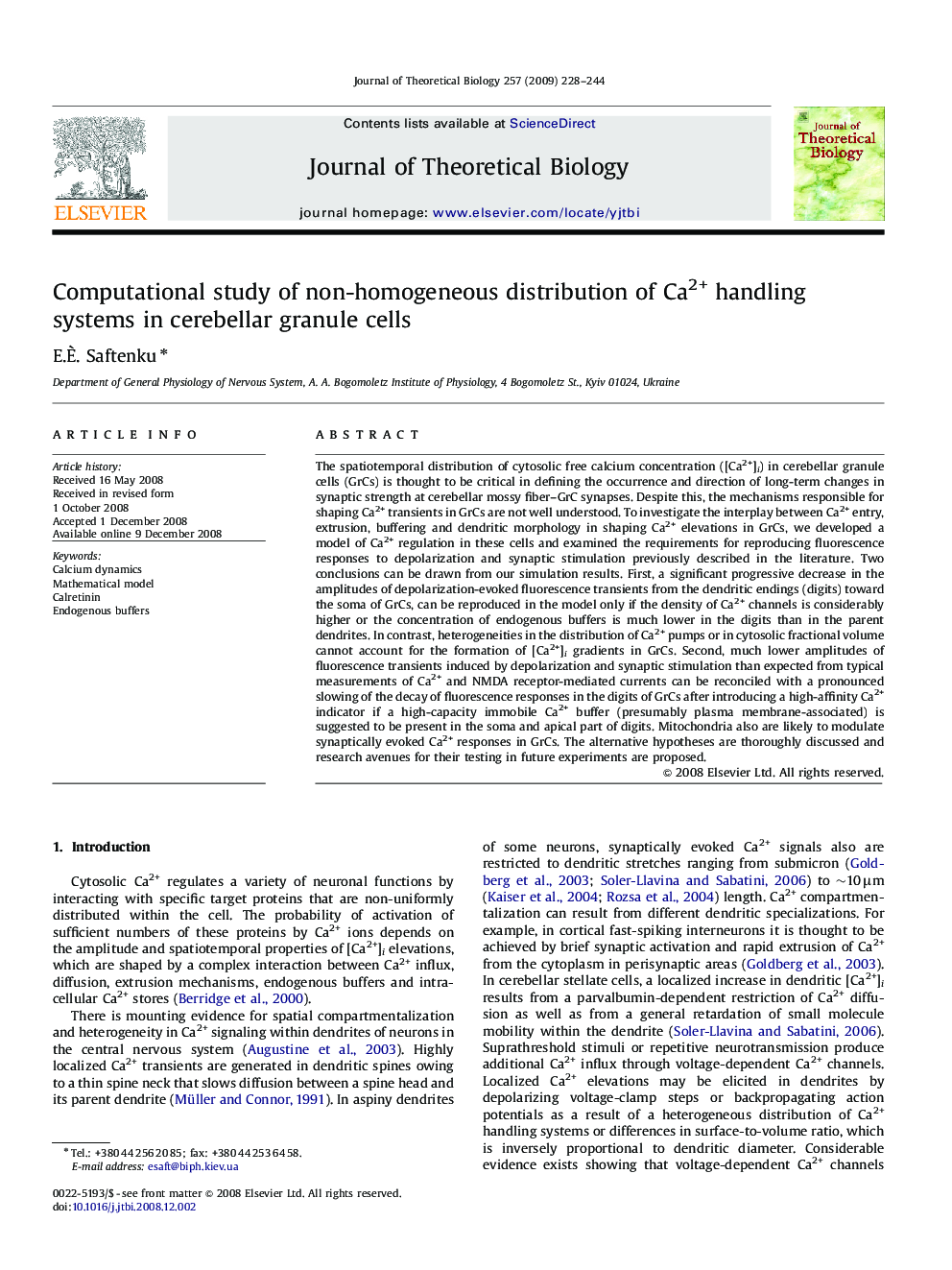| Article ID | Journal | Published Year | Pages | File Type |
|---|---|---|---|---|
| 4498397 | Journal of Theoretical Biology | 2009 | 17 Pages |
The spatiotemporal distribution of cytosolic free calcium concentration ([Ca2+]i) in cerebellar granule cells (GrCs) is thought to be critical in defining the occurrence and direction of long-term changes in synaptic strength at cerebellar mossy fiber–GrC synapses. Despite this, the mechanisms responsible for shaping Ca2+ transients in GrCs are not well understood. To investigate the interplay between Ca2+ entry, extrusion, buffering and dendritic morphology in shaping Ca2+ elevations in GrCs, we developed a model of Ca2+ regulation in these cells and examined the requirements for reproducing fluorescence responses to depolarization and synaptic stimulation previously described in the literature. Two conclusions can be drawn from our simulation results. First, a significant progressive decrease in the amplitudes of depolarization-evoked fluorescence transients from the dendritic endings (digits) toward the soma of GrCs, can be reproduced in the model only if the density of Ca2+ channels is considerably higher or the concentration of endogenous buffers is much lower in the digits than in the parent dendrites. In contrast, heterogeneities in the distribution of Ca2+ pumps or in cytosolic fractional volume cannot account for the formation of [Ca2+]i gradients in GrCs. Second, much lower amplitudes of fluorescence transients induced by depolarization and synaptic stimulation than expected from typical measurements of Ca2+ and NMDA receptor-mediated currents can be reconciled with a pronounced slowing of the decay of fluorescence responses in the digits of GrCs after introducing a high-affinity Ca2+ indicator if a high-capacity immobile Ca2+ buffer (presumably plasma membrane-associated) is suggested to be present in the soma and apical part of digits. Mitochondria also are likely to modulate synaptically evoked Ca2+ responses in GrCs. The alternative hypotheses are thoroughly discussed and research avenues for their testing in future experiments are proposed.
